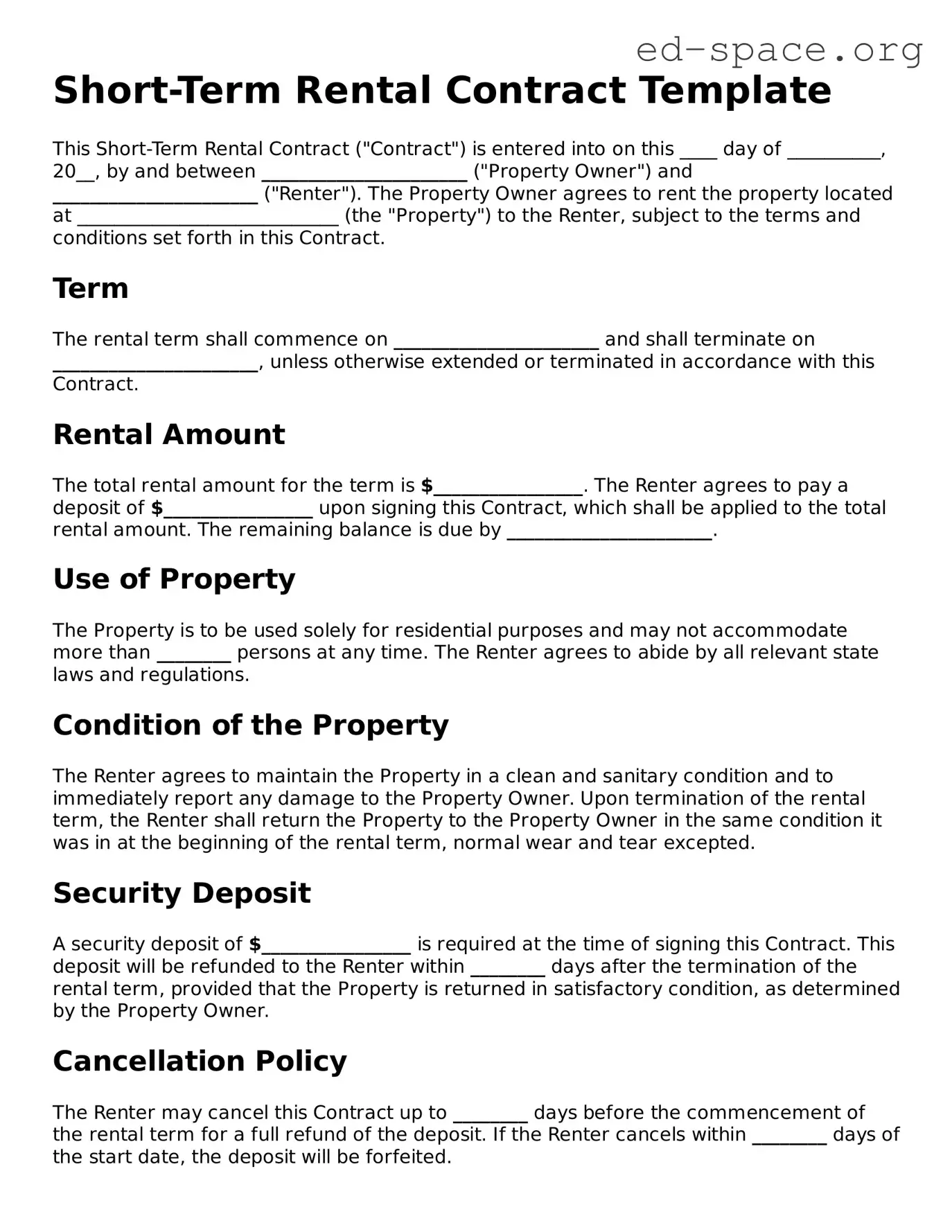Short-Term Rental Contract Template
This Short-Term Rental Contract ("Contract") is entered into on this ____ day of __________, 20__, by and between ______________________ ("Property Owner") and ______________________ ("Renter"). The Property Owner agrees to rent the property located at ____________________________ (the "Property") to the Renter, subject to the terms and conditions set forth in this Contract.
Term
The rental term shall commence on ______________________ and shall terminate on ______________________, unless otherwise extended or terminated in accordance with this Contract.
Rental Amount
The total rental amount for the term is $________________. The Renter agrees to pay a deposit of $________________ upon signing this Contract, which shall be applied to the total rental amount. The remaining balance is due by ______________________.
Use of Property
The Property is to be used solely for residential purposes and may not accommodate more than ________ persons at any time. The Renter agrees to abide by all relevant state laws and regulations.
Condition of the Property
The Renter agrees to maintain the Property in a clean and sanitary condition and to immediately report any damage to the Property Owner. Upon termination of the rental term, the Renter shall return the Property to the Property Owner in the same condition it was in at the beginning of the rental term, normal wear and tear excepted.
Security Deposit
A security deposit of $________________ is required at the time of signing this Contract. This deposit will be refunded to the Renter within ________ days after the termination of the rental term, provided that the Property is returned in satisfactory condition, as determined by the Property Owner.
Cancellation Policy
The Renter may cancel this Contract up to ________ days before the commencement of the rental term for a full refund of the deposit. If the Renter cancels within ________ days of the start date, the deposit will be forfeited.
Liabilities
The Renter agrees to assume all liabilities for any accidents, injuries, or damages that occur during their stay, and to hold the Property Owner harmless against all claims, except in cases of the Property Owner's gross negligence or intentional misconduct.
Additional Terms
Additional terms and conditions may be added here: ___________________________________________________________.
Governing Law
This Contract shall be governed by the laws of the state of __________. Any disputes arising under this Contract shall be resolved through arbitration in accordance with the laws of said state.
By signing below, both the Property Owner and the Renter agree to the terms and conditions set forth in this Short-Term Rental Contract.
Property Owner Signature: __________________________________ Date: _____________
Renter Signature: __________________________________ Date: _____________
